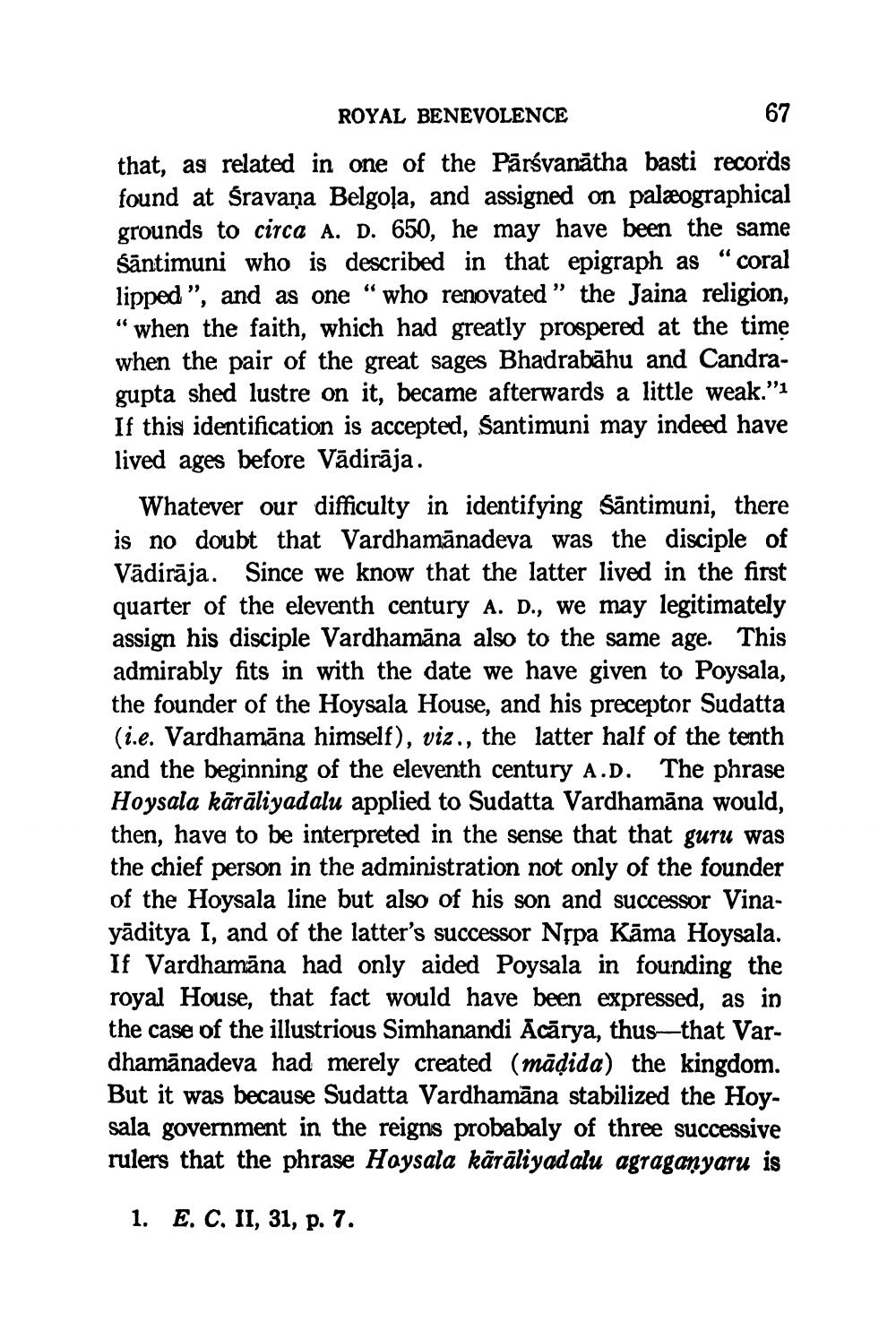________________
67
ROYAL BENEVOLENCE that, as related in one of the Pārsvanātha basti records found at Śravana Belgoļa, and assigned on palæographical grounds to circa A. D. 650, he may have been the same Säntimuni who is described in that epigraph as "coral lipped”, and as one "who renovated" the Jaina religion, “when the faith, which had greatly prospered at the time when the pair of the great sages Bhadrabāhu and Candragupta shed lustre on it, became afterwards a little weak."1 If this identification is accepted, santimuni may indeed have lived ages before Vādirāja.
Whatever our difficulty in identifying Sāntimuni, there is no doubt that Vardhamānadeva was the disciple of Vādirāja. Since we know that the latter lived in the first quarter of the eleventh century A. D., we may legitimately assign his disciple Vardhamāna also to the same age. This admirably fits in with the date we have given to Poysala, the founder of the Hoysala House, and his preceptor Sudatta (i.e. Vardhamāna himself), viz., the latter half of the tenth and the beginning of the eleventh century A.D. The phrase Hoysala kārāliyadalu applied to Sudatta Vardhamāna would, then, have to be interpreted in the sense that that guru was the chief person in the administration not only of the founder of the Hoysala line but also of his son and successor Vinayāditya I, and of the latter's successor Nșpa Kāma Hoysala. If Vardhamāna had only aided Poysala in founding the royal House, that fact would have been expressed, as in the case of the illustrious Simhanandi Ācārya, thus—that Vardhamānadeva had merely created (mādida) the kingdom. But it was because Sudatta Vardhamāna stabilized the Hoysala government in the reigns probabaly of three successive rulers that the phrase Haysala kārāliyadalu agraganyaru is
1.
E. C. II, 31, p. 7.




